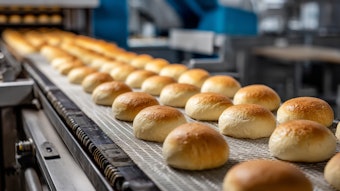The use of gas chromatography (GC) for detecting and quantitating volatile materials has traditionally been associated with pretreatment or enrichment techniques to concentrate the voatiles for analysis. Such methods are difficult, tedious, and time consuming. Further, these practices sometimes result in the formation of products that are not present in the original sample. High-vacuum distillations minimize this effect because of the low heat requirements; however, such procedures are inherently complex.
In 1971, a direct, unconventional GC procedure was described for the detection of volatiles in vegetable oils. This method requires no prior enrichment procedures. The technique was further refined to include salad oils and shortenings of varying quality and raw and roasted peanuts, and to correlate the flavor scores of taste panels with instrumental data for such items as peanut butter, vegetable oils, soy protein products, and other foods. The method is simple, rapid, sensitive, and versatile.










